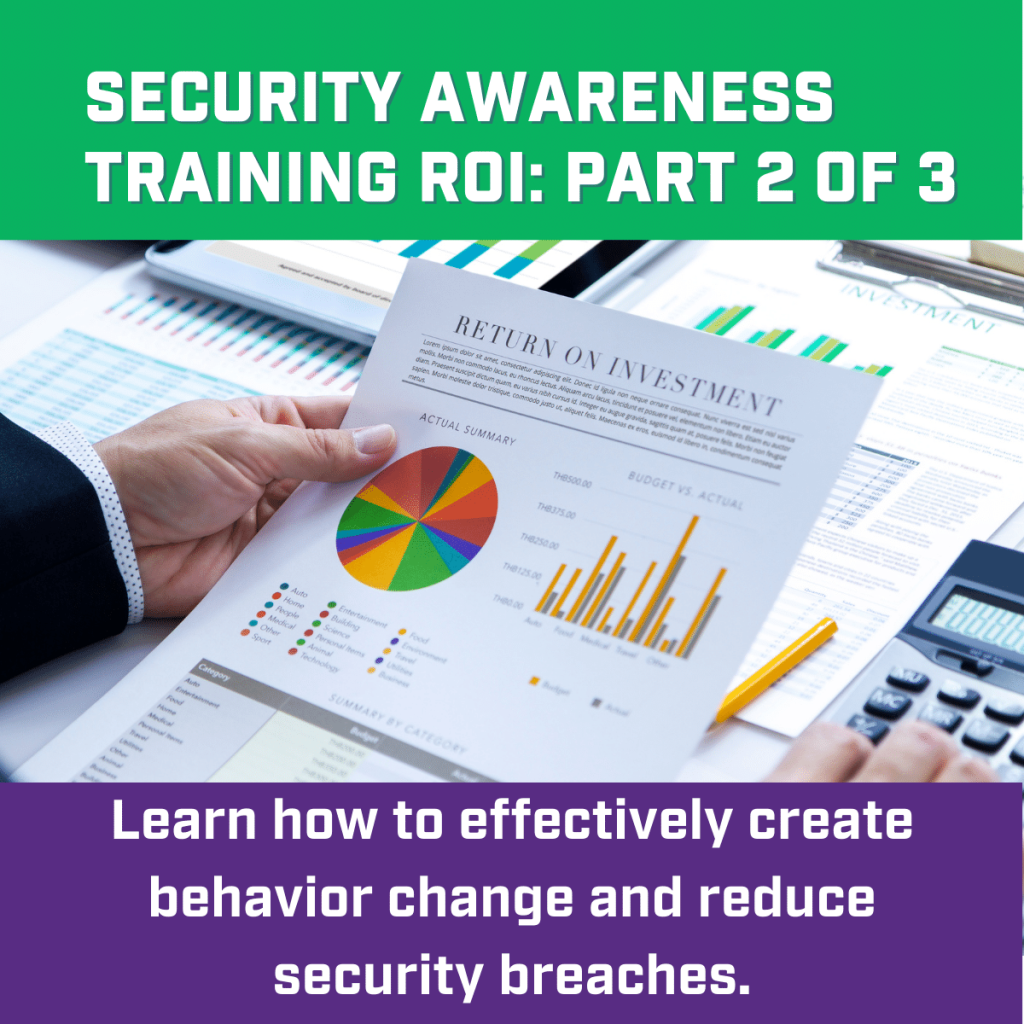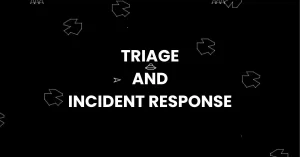If you haven’t read Part 1 of our Security Awareness Training ROI, you can here. In it, we discussed the high-level overview of why security awareness training should be a vital part of any company’s cybersecurity strategy and how to get the best security awareness training ROI.
A company allocates a hefty portion of its IT budget to cybersecurity (Gallagher, a global insurance broker and consulting company, recommends 4% of a business’s revenue should go to IT). Due to that, the CFO will want to know if it’s effective.

Human Related Error
A company can spend the majority of its budget on cybersecurity products, like software to detect cyber attacks, etc. However, when 93 to 97% of breaches happen through human error, not spending on security awareness training for employees is detrimental. It is like spending all your money on building a house but not checking to see if the foundation is sturdy. Unfortunately, this can lead to poor security awareness training ROI.
Cybersecurity ROI: How Security Awareness Factors In
The overall cybersecurity strategy for an organization is a complex beast that includes many different aspects, technologies, and processes. From robust firewalls and intrusion detection systems to advanced malware protection and strong access controls, there are a lot of moving parts.
But the one aspect of cybersecurity that shouldn’t be overlooked is security awareness training.
Security awareness training helps employees identify and prevent cyber threats, which is a crucial part of any comprehensive cybersecurity strategy. Employees can be the first line of defense against cyberattacks, or your biggest vulnerability, depending on how well they’re trained to recognize and respond to threats.
Investing in security awareness training can help reduce the risk of cyberattacks and data breaches, and ultimately save your organization money.
Maximizing Security Awareness Training ROI
To maximize the ROI of security awareness training, you need to ensure that all employees understand their role in protecting the company from the different types of cyber attacks they might encounter and that they’re able to put those concepts into practice.
Some of the ways you can maximize the ROI of security awareness training include:
- Ensure The Training Is Engaging
Employees have a lot on their plate every day as it is, so they will have a lot of competing demands for their attention. If the security awareness training is tedious or difficult to understand, they will likely tune it out. Make sure the training is engaging and relevant to their day-to-day work.
- Make It Interactive
Training that includes quizzes, simulations, and real-world scenarios can help employees better understand how to apply what they’ve learned to their work. The more interactive the training, the more likely they’ll remember what they’ve learned and be able to put it into practice later.
- Give Employees Opportunities To Practice
Just like with any new skill, employees need opportunities to practice what they’ve learned to retain the information and get better at using it. Running simulations and drills regularly can help employees keep their skills sharp.
- Measure Results
Just like with any new skill, employees need opportunities to practice what they’ve learned to retain the information and get better at using it. Running simulations and drills regularly can help employees keep their skills sharp.

- Reward Progress
Rewarding their progress is a great way to motivate employees to stay engaged and feel enthusiastic about security. For example, you can give employees badges or points for completing training modules or passing quizzes. Or, you can enter employees into a monthly drawing for a prize if they successfully pass random phishing simulations.
- Tailor It To The Different Roles
Employees in different positions will have access to different types of data and therefore have different needs and responsibilities when it comes to cybersecurity. C-level executives are often targeted in Business Email Compromise or “whaling” attacks.
Training for executives should then focus on tackling the challenges associated with preventing such attacks. Make sure the training is tailored to the different roles within your organization, so everyone gets the information they need.
- Make It Mandatory
To ensure employees are completing the training, you need to make it a required activity. Employees should know that they’re expected to complete the training as part of their job, and need to be aware of its importance for the organization.
Summary of Security Awareness Training ROI
By following these tips, you can make your security awareness training more effective and ensure your employees are better prepared to protect your organization from cyberattacks. Plus, a more effective training means a higher ROI on the investment.
Read Part 3 of this series by Roy Zur, CEO of ThriveDX for Enterprise, to learn how it all ties together.
Source: https://thrivedx.com/resources/article/cybersecurity-awareness-training-roi-part-2
About DT Asia
DT Asia began in 2007 with a clear mission to build the market entry for various pioneering IT security solutions from the US, Europe and Israel.
Today, DT Asia is a regional, value-added distributor of cybersecurity solutions providing cutting-edge technologies to key government organisations and top private sector clients including global banks and Fortune 500 companies. We have offices and partners around the Asia Pacific to better understand the markets and deliver localised solutions.










